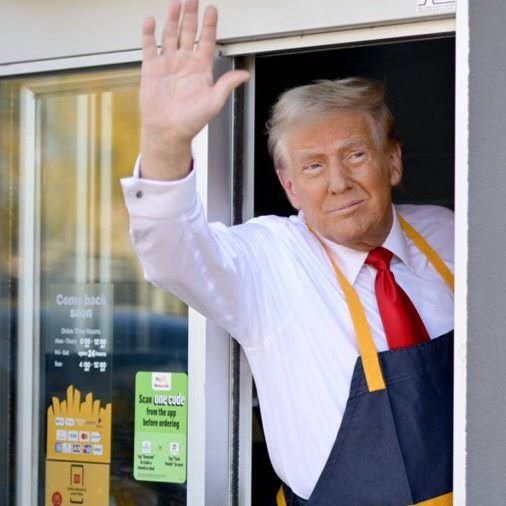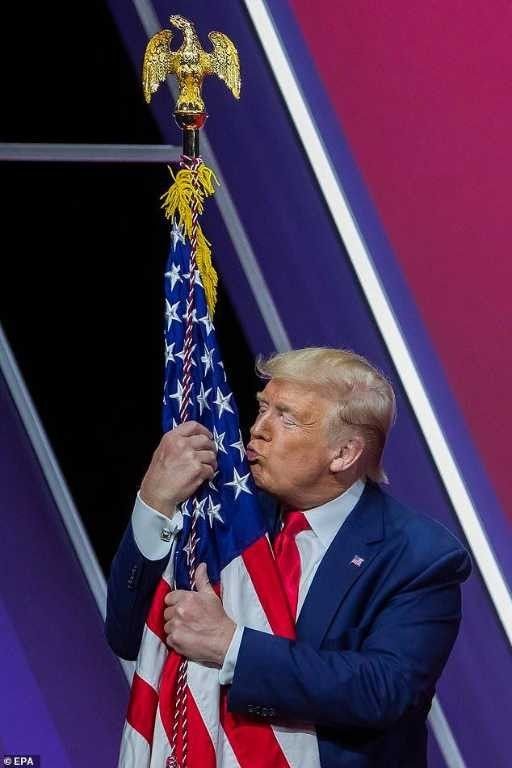Coral Reefs Can’t Vote, So Trump Deregulated Them
The president just opened a marine sanctuary to commercial fishing. Yes, really. So, while the rest of us are trying to keep our reusable tote bags out of the landfill and skip straws for the turtles, Trump has decided it’s the perfect time to crack open one of the most protected marine zones in the world. In a move that feels ripped from a climate dystopia script, the Trump administration announced it’s reopening the Pacific Remote Islands Marine National Monument.
Nearly 500,000 square miles of coral reefs, endangered species habitats and marine biodiversity. This area was first protected by Bush in 2009, then expanded by Obama in 2014 and now? It’s open for business. The U.S. commercial fishing vessels got open access from president Trump in April 2025. The justification? That most fish are “migratory” and therefore the ban didn’t really matter. Okay well, scientists and environmentalists are calling B.S. because most species in that region are residents. They live there. They breed there. They’re not just passing through like spring breakers, Trump.
And here’s where it gets political: this isn’t just about animals. It’s about deregulation, money and power. Trump’s trying to fight for the U.S. commercial fishing industry, which he claims is being “unfairly restricted.” Wrong fight, respectfully. He’s also trying to close the seafood trade gap, since the U.S. imports way more than it exports. But instead of investing in sustainable aquaculture or future-facing food systems, he’s choosing to cut marine protections that took decades to build. To be clear: this zone isn’t just water. It’s home to endangered sea turtles, rare coral ecosystems, and fish populations already under pressure from climate change and overfishing. Removing protections now is like tearing down a national park to build a parking lot - but underwater.
So while people are fighting for climate justice, changing their diets to eat less meat, and raising awareness about ocean plastic, the federal government just turned a critical conservation zone into a fishing free-for-all. It’s 2025. And we’re still asking: why are the people with the most power the ones doing the most damage?
Trump vs. Cancer Research: Who Needs a Cure Anyway?
While billionaires are flying to space and politicians are debating TikTok bans, the Trump administration quietly worked on something a little more crucial: cancer research. But not in a positive sense, who would have thought. Trump’s Budget Priorities: Less Labs, More Lobbyists.
In early 2025, Trump proposed slashing the NIH budget nearly in half, from $48.5 billion down to $27.3 billion. Killing Cancer Research to ‘Save Money’? He’s Not Cutting Golf Budgets, tho. This isn’t just numbers on a spreadsheet. This is funding that drives the development of new cancer treatments, early detection methods, and survivorship care. It’s about patients, families and futures. And while the administration claimed it was about “streamlining costs,” scientists, doctors, and pretty much the entire research community called it what it is: sabotage. Luckily, it didn’t go down quietly. Twenty-two state attorneys general filed a lawsuit, and a federal judge temporarily blocked the cuts for now. But the fact that this even got this far is alarming. Because here’s the thing: if your plan to balance a budget starts with cancer research, maybe it’s time to rethink your priorities. Or better yet, find new leadership.
Make Birkin Great Again? Trump Starts a Handbag War.
China exposes Dirty Backstories and It’s all over TikTok, Livestreams over Livestreams…
In April 2025, the global luxury market finds itself at the crossroads of fashion and geopolitics. The escalating trade tensions between the United States and China have not only impacted international relations but have also sent ripples through the luxury goods industry. Chinese manufacturers are talking about production secrets behind high-end products on social media platforms. These revelations are not just about price disparities but also about the transparency and authenticity of luxury branding.
It’s no secret that a Birkin bag doesn’t cost 100,000€ to produce - anyone in the industry knows that luxury pricing has always included an element of mythology. What brands have long sold us isn’t just the bag, but the story: better craftsmanship, higher quality materials, longer-lasting value. But the recent revelations challenge all of that. Videos, leaked receipts, and insider reports suggest that many of the “dupes” found online for 100€ aren’t imitations - they’re in fact the same bags, made in the same chinese factories. These statements raise concerns about counterfeit goods and intellectual property rights. While some manufacturers claim to produce items for luxury brands, the authenticity of these claims is difficult to verify. Brands like Louis Vuitton and Lululemon have denied associations with these factories, emphasizing the risks consumers face when purchasing products outside official channels. The luxury goods sector, heavily reliant on global supply chains and international consumer bases, faces significant challenges. Brands must navigate increased production costs, shifting consumer behaviors, and the complexities of international trade policies. The current climate underscores the need for adaptability and strategic planning within the industry.
What's actually behind the bag talk: The Tariff Tug-of-War & China’s Strategic Visa Policy
The U.S. has imposed tariffs reaching up to 145% on Chinese imports, supposedly to address trade imbalances and protect domestic industries. China clapped back with 125% tariffs on American goods, and just like that, the trade war gets another messy chapter. These measures have led to skyrocketing costs for manufacturers and consumers. Luxury houses like Hermès and Chanel have quietly announced price hikes in the U.S., blaming the new economic climate for the markup. China didn’t stop there. In what feels less like diplomacy and more like a strategic “fine, I’ll just invite everyone else to the party,” they rolled out a new visa-free policy. You can now travel to China for up to 15 days, no visa needed, shop till you drop, and fly back with luxury goods for one tenth of the price you’d pay in the U.S. The goal? Pull global spending away from Western retailers and straight into Chinese markets.
The whole thing feels painfully familiar - like a high school drama playing out on a global stage. Are these really the world’s leading superpowers, or just two mean girls fighting over the same guy, trading economic jabs instead of hallway gossip? Either way, we’re all part of the group chat now, watching it unfold in real time. Every punch, every policy move, every passive-aggressive press release - it’s all out in the open.
And the worst part?
We’re not just watching - we’re paying for it.



